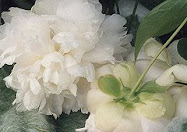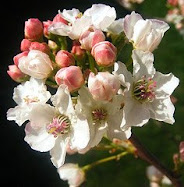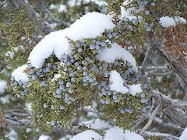 It is only the middle of August and it's already begun. Truthfully, it goes on all year except when the garden is under snow, but August through November marks the apogee. Summer's end days up to first snowfall is the season when the gardener's job most closely resembles that of a pack mule.
It is only the middle of August and it's already begun. Truthfully, it goes on all year except when the garden is under snow, but August through November marks the apogee. Summer's end days up to first snowfall is the season when the gardener's job most closely resembles that of a pack mule.Cutting back and away the greying lavender blooms, spent Shasta and Ox-Eye daisies, yellowing stalks of phlox, delphinium and daylilly, seeded heads of coreopsis. Loading up the wheelbarrow with all the wilting detritus, and trundling it through several trips across the uneven ground of the neighborhood green space to a wild woodlot where it can be dumped out of sight among the thickets of brush, and maybe start a wildflower patch in a spot that actually is wild. Re-loading the wheelbarrow with sacks of composted manure to feed and replenish the beds where bulbs, peonies, iris and creeping phlox are gathering strength and nutrition for next year. Trucking fresh mounds of cypress mulch to smarten-up bare patches and give protection to the soil cover of perennials. The larger and more productive a garden is, the greater will be the number of gardener's hours of slog and hack and haul, from summer straight through the autumn.
Clearing away and fall bulb planting just do not confer anywhere near the same measure of enjoyment as do the laying in and sowing of spring and early summer. The latter is a labor of love, the former a drudgery carried out with an achy-breaky heart. The payoff that end-of-season garden work will yield (apart from a more spic and span appearance), is in the far distant future of next year. The gardener is embarked upon a rather melancholy reduction of garden companions, a long-drawn series of goodbyes for another whole year to each species as it finishes its turn before the footlights, and segues from glowing energy to a bedraggled demise. The best days in the garden – the childlike optimism of spring and the cornucopia bounty of summer – have waned, the prospect of the garden's annual disappearance into winter hibernation looms upon the horizon.
Each year since planted six summers ago, pruning the lavender plants alongside the front walks has become a more onerous task. Begun as six seedlings, each about the size of my forearm, they have annually grown so luxuriantly as to now form almost a continuous shrubbery on either side of the walk for nearly 20 feet in length, 3 feet in width, 2 feet in height, generating tons of flowers every season. Completely self-sufficient and drought-indifferent since their one-year birthday, each late summer (well before any slightest possibility of a damaging fall of frost), they are pruned back by the recommended one-third of their greenery. This must needs be done to stimulate next year's fresh leafing-out and flowering.
The last couple years, the pruning has been more like half the bushy growth, just to prevent the lavender from totally obliterating the sidewalk and nearby companion plantings. One is not supposed to cut into the leafless “old wood” of the lavender trunks, on pain of possible death of the plant, but the gnarled and thickened wood now stretches up and out about a foot from the ground on these plus-size specimens. Perhaps the season will come when the proportion of woodiness exceeds the foliage and flowers, and they will have to be excised and replaced. I don't believe there is any means of keeping lavender from eventually going this route, as how could one stop a shrubby plant's trunk from increasing in density and size while it is alive and growing?
The rudbeckia Prairie Sun sown in seed in June have attained only about 6 inches in height this cool, rainy year, they may not reach flowering stage before the killing frosts descend. And another source of heartache, the dratted deer passed through night before last and ate all the at-peak flowers and the buds on the hybrid roses and the daylillies. They caught me unawares, after rainfall had washed the plants clean of sprayed deer repellent.
Thank the stars and planets for the Russian sage, ornamental grasses and the chrysanthemums during summer's diminishment. The sage is a 6-foot spray of long, lilac plumage, and bears a honey-spice fragrance more pleasing and less earthy than other sages. From now until winter, the miscanthus grasses, blue oat grass and switchgrass are in their glory, full, covered in feathery fronds, capturing and refracting the watery rainbow shafts of northern Michigan coastal light and shadow. The mums, in tints of ochre, cotton candy, burgundy, eggshell white and burnished gold, are just now beginning to peek open their flower buds. That's why I love chrysanthemums so, the rare flower that holds its promise close to the chest until ready for August-September delivery.
Chrysanthemums are the last chapter in the big, multi-layered, beloved novel of the garden. The revelations and tying up given in this final chapter are savored, but the end page is still approached with the sadness of knowing that soon it will all be over and the cover closed. But for now, even with the bale hauling, the garden is still a very good read.









